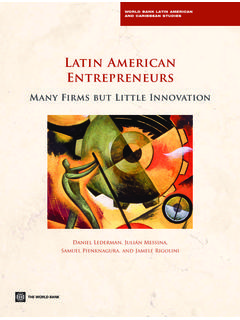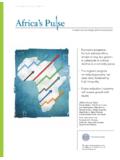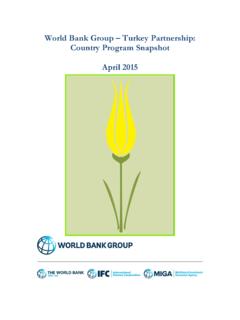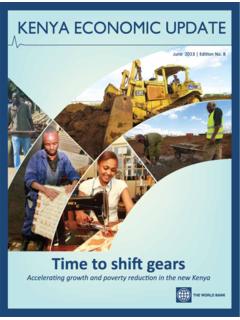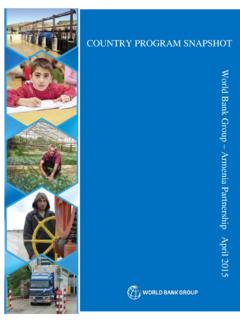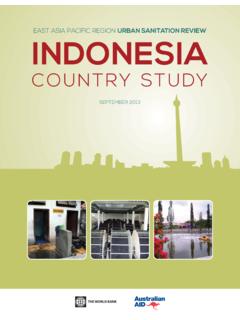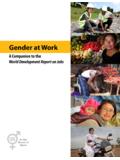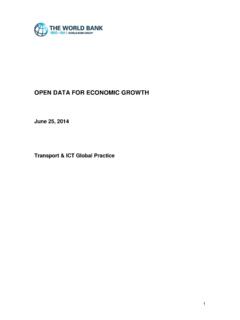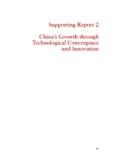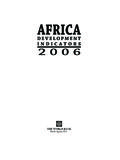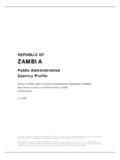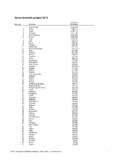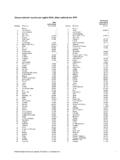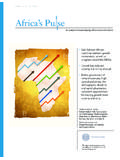Transcription of FDI and Manufacturing in Africa - World Bank Group
1 Although Africa receives only a small fraction of global FDI, inflows are increasing since 2010. FDI into SSA was only of World FDI but still totaled $45 billion in 2013, up by 8% from 2012. South-South FDI inflows are also increasing, including from other African countries and especially South Africa . Overall, the main investors in Africa are coming from the EU countries, the United States, India and China. In 2011, the last year for which data is available, Africa yielded the highest rate of return for FDI, indicating that there are plenty opportunities paired with relatively low can play a catalyst role in developing a Manufacturing sector, but Africa has lagged behind other regions in both FDI and industrialization.
2 Moving from agriculture into Manufacturing (including agro-processing) is usually associated with structural change that creates jobs and develops skills that are critical for continued economic growth and poverty reduction. Manufacturing offers an entry point for industrialization, and by attracting increased FDI, African countries can also benefit from the skills development, management experience, technology transfer, and integration into global value chains that it s FDI into Africa is significant and rising.
3 Between 2003 and 2012, direct investment flows from China to Africa grew at an annualized compound rate of , with investment stock increasing In 2013, FDI from China is estimated at $ billion, and cumulative investment stock at over $25 billion. China has direct investment in 50 African countries, and is increasingly FDI and Manufacturing in AfricaAverage Jobs CreatedTotal Capital Investment (US$M)Number of ProjectsManufacturing51013,28477 Extraction1,0648,72614 Construction1,4154,6504 ICT & Internet Infrastructure3221,8504 Electricity661,3514 Other business activities1561508 Sales, Marketing & Suppor1514923 Logistics & Distribution1331473 Business Services17848 Education & Training75738 Retail38324 Chinese FDI Greenfield Projects, 2003-2014 Continued on countries can also benefit from the skills development, management experience, technology transfer.
4 And integration into global value chains that it FDI in Africa and Manufacturing FDI in Ethiopia and RwandaCHINESE DIRECT INVESTMENT IN AFRICAAt the end of 2012, the 11 largest cumulative investment destinations were: South Africa , Nigeria, Zambia, Algeria, Angola, Sudan, DRC, Zimbabwe, Mauritius, Ethiopia, and Tanzania. Together, they account for 75% of China s total direct investment stock in out of primary sectors. Looking at selected greenfield projects, Manufacturing is the most important destination, and FDI from China and India come top in terms of job s FDI to Africa is shifting towards the Manufacturing sector.
5 Although a large share of China s investment in African countries has traditionally been in extractive industries and construction, investment in Manufacturing has increased in recent years. As of the end of 2011, China s cumulative investment stock in the Manufacturing sector in Africa grew 10% year-on-year to $ billion, and in 2013, it accounted for 15% of Chinese FDI. In terms of greenfield projects 2003-2014, both the largest share of Chinese capital investment, and the largest number of projects, were in is also a shift in FDI from China within the Manufacturing sector towards higher value-added activities.
6 Chinese investment in Manufacturing in African countries has expanded from textiles and apparel to industries such as auto, home appliances, and building materials. Reasons for investment have expanded from avoidance of trade barriers and desire for new market access to include industrial rebalancing and strategic entry. Investment is now by a variety of private- and state-owned enterprises. Investment also is also diversifying from traditional greenfield investment, M&A, wholly-owned enterprise, joint ventures or stake investment, to include cluster investments in economic and trade cooperation zones.
7 In Ethiopia, total FDI inflows in 2013 accounted for 2% of GDP. The top investors in Manufacturing since 2008 have been China, followed by India and Turkey. Both the number of FDI projects and the volume of investment have increased since 2011, but the share of projects under operation by top investors has declined. Manufacturing is the largest recipient of FDI under operation both by level of investment and by number of projects, 76% and 41% of the total respectively.
8 It is also the largest non-agriculture sector in terms of job creating FDI, 2008-2014, registering 28% as compared with 54% for agriculture. China, Turkey and India are the top three job creators in Manufacturing sector both for permanent and temporary type of jobs from 2008 to 2014, reflecting the importance of Manufacturing FDI from new partners. Most of the investment has concentrated in textile and clothing, leather and shoemaking, and food and beverage subsectors.
9 Firm level data suggests that relatively poor trade logistics and lack of skilled labor are constraints to both export-oriented firms and FDI. In Rwanda, total FDI inflows in 2013 accounted for of GDP. Rwanda s FDI increased more than threefold from a low base in 2008 to $258 million in 2013, totaling $ billion over the five years, and more than 50% of FDI projects are operational. Manufacturing accounts for the third largest share of total FDI, after ICT and finance; and it has expanded five-fold during 2011-2013.
10 Manufacturing FDI is dominated by construction materials and agro-processing subsectors. Given the high concentration in ICT and finance, job creation is relatively low, but net profits and return on investment are highest in Manufacturing . Rwanda s strong performance in improving the regulatory business climate is attractive for FDI and contributes to the relatively high rate of project operationalization. gExtractiveIndustry31%20%18%16%15%Financ eOtherConstructionManufacturing051015202 53035 Chinese FDI by Sector, 2013 Note: Other sectors include commercial services, scientific research, whole-sale and retail, agriculture, and real : MOFCOM; State Council of China; and Pigato & Tang (2015).
